Plasmids and Plasmid Biology By KonradT. Juszkiewicz, MD,

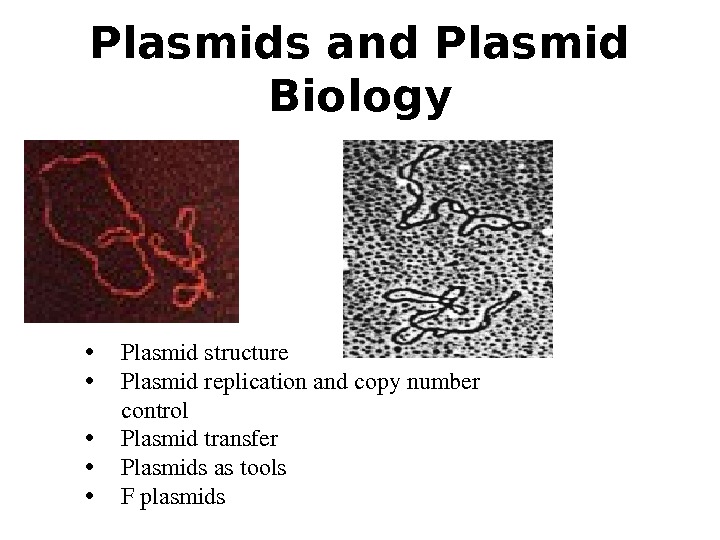
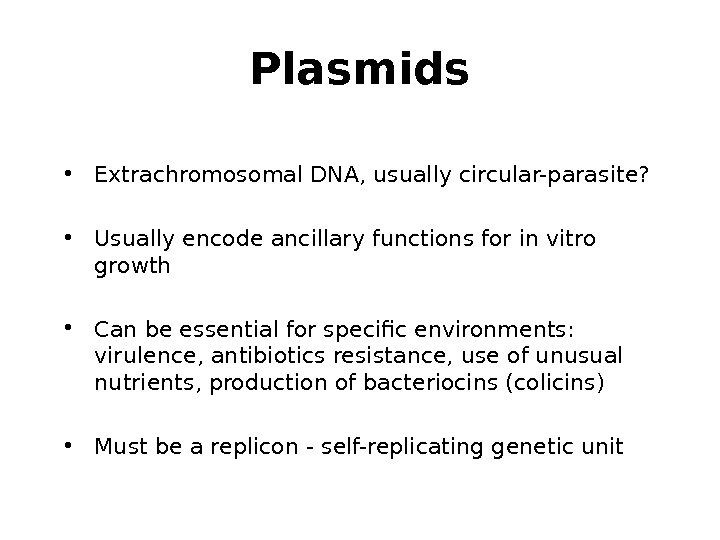
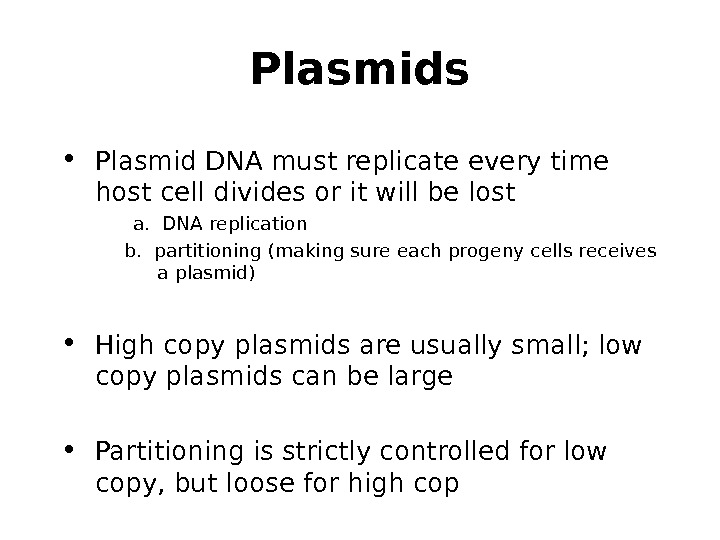
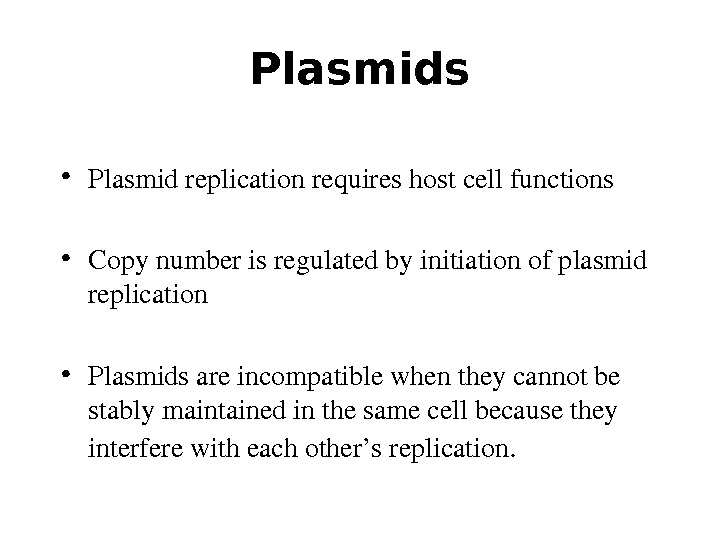

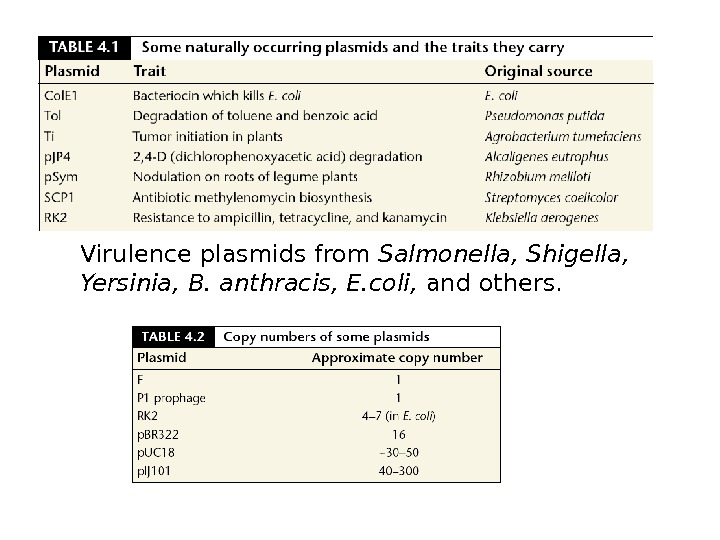
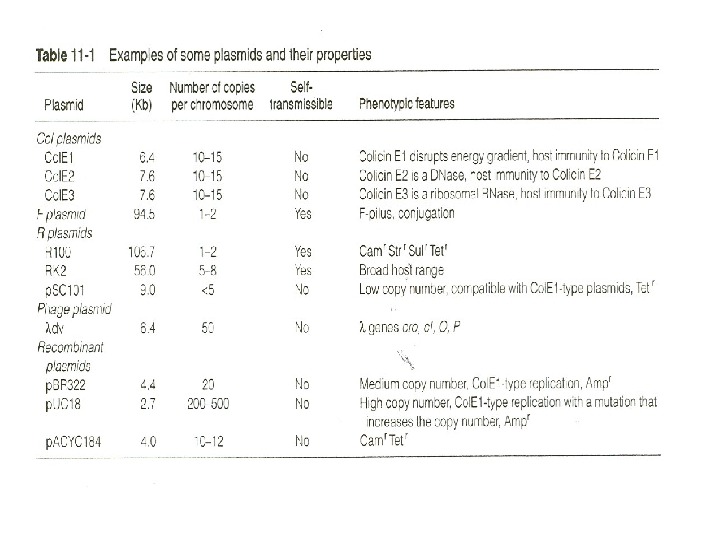
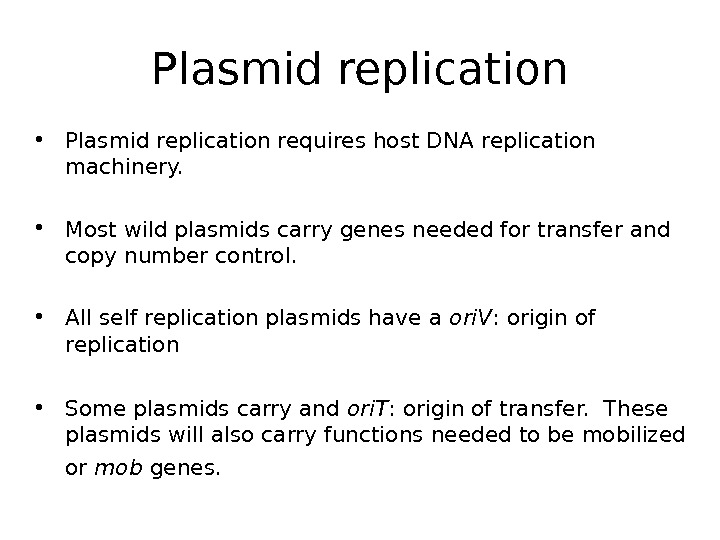
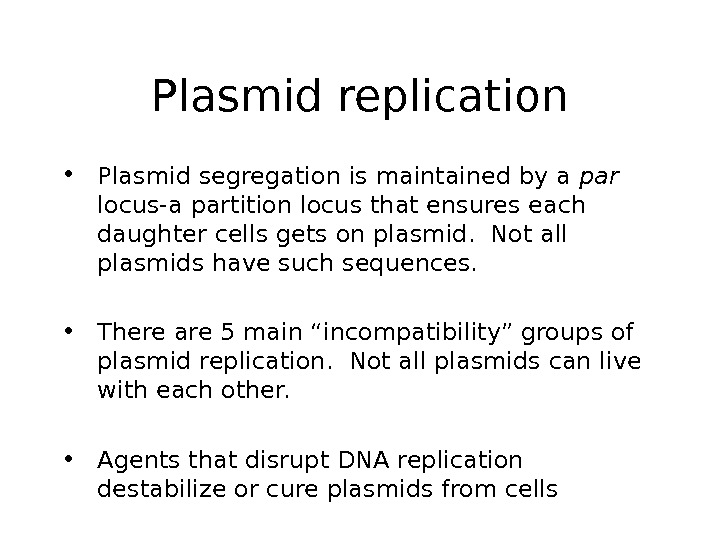


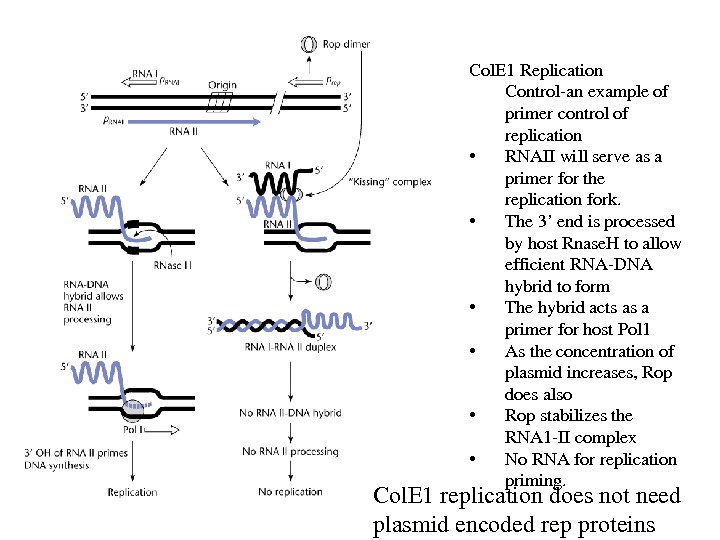

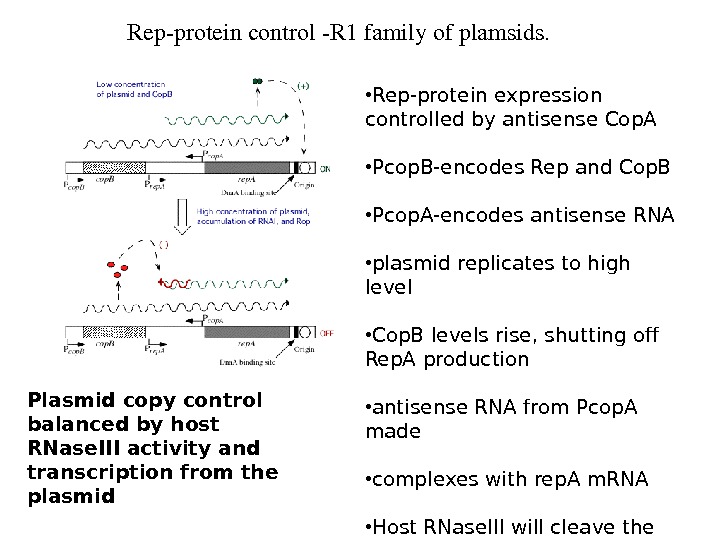
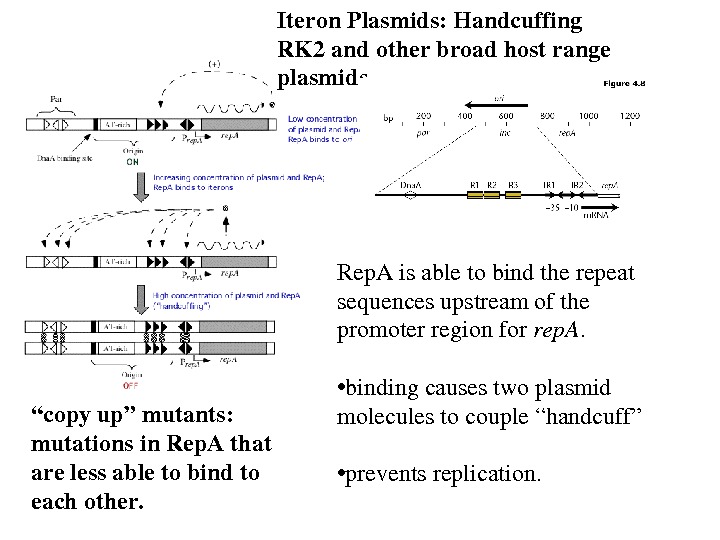
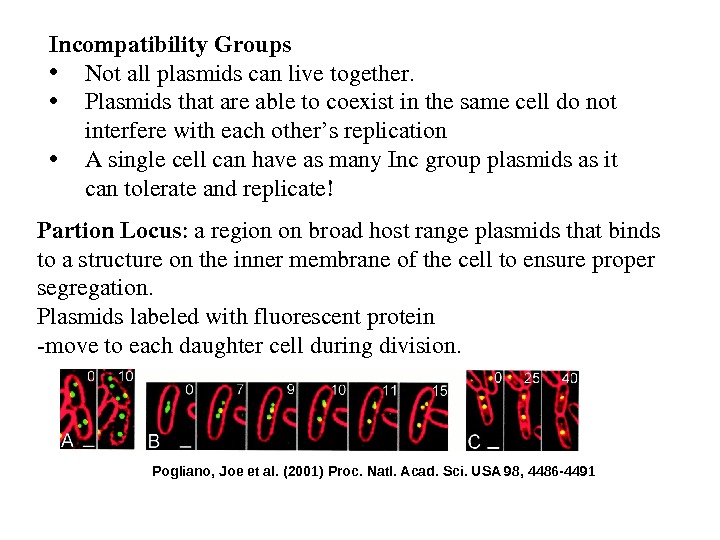
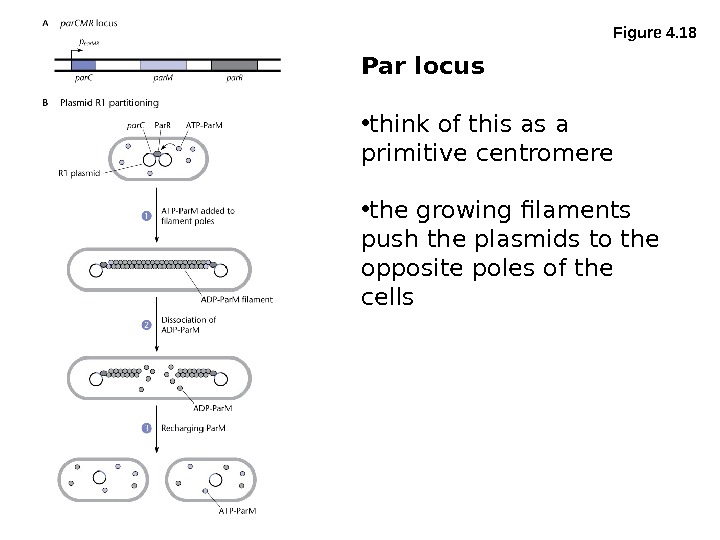


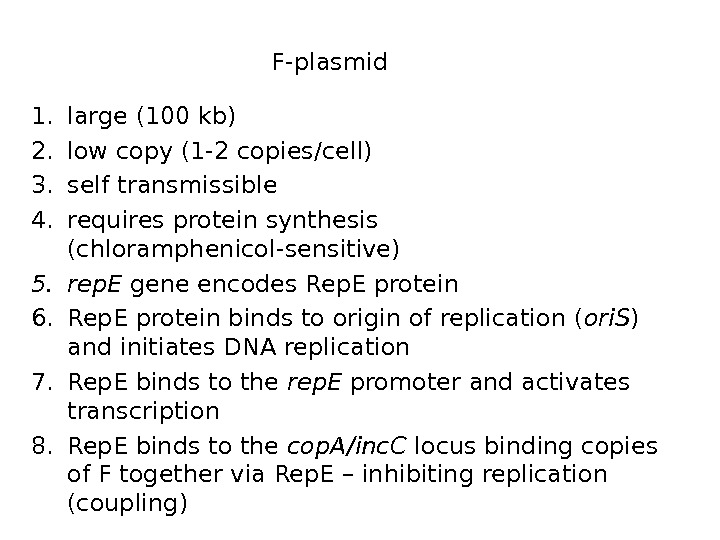
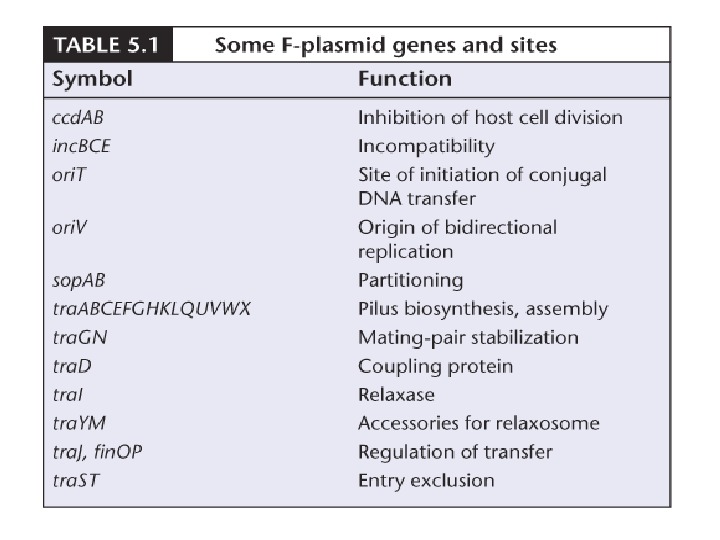
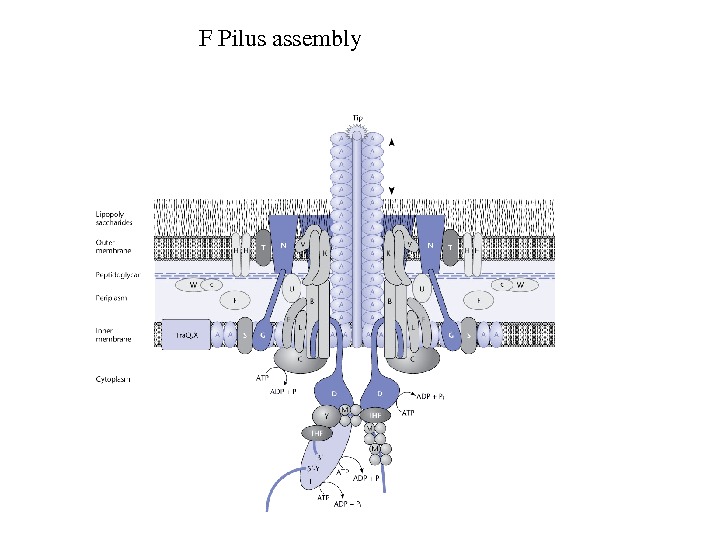


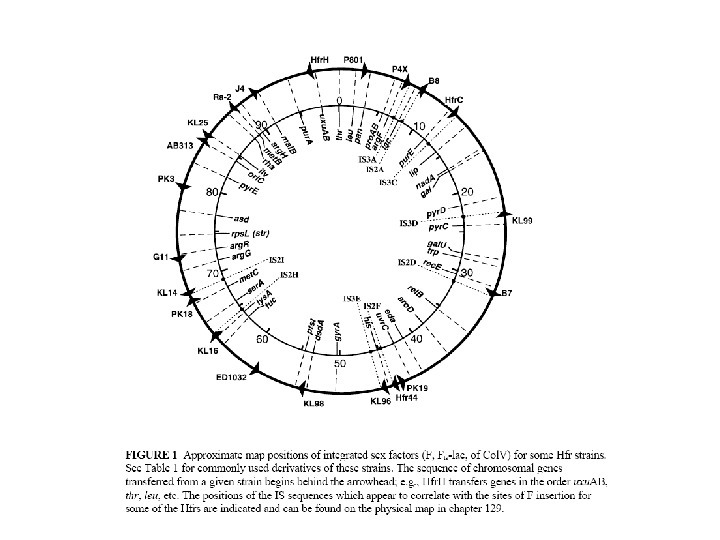
plasmid_and_its_biology.ppt
- Размер: 1.6 Mегабайта
- Количество слайдов: 26
Описание презентации Plasmids and Plasmid Biology By KonradT. Juszkiewicz, MD, по слайдам
 Plasmids and Plasmid Biology By Konrad. T. Juszkiewicz, MD, MPH
Plasmids and Plasmid Biology By Konrad. T. Juszkiewicz, MD, MPH
 • Plasmidstructure • Plasmidreplicationandcopynumber control • Plasmidtransfer • Plasmidsastools • Fplasmids. Plasmids and Plasmid Biology
• Plasmidstructure • Plasmidreplicationandcopynumber control • Plasmidtransfer • Plasmidsastools • Fplasmids. Plasmids and Plasmid Biology
 Plasmids • Extrachromosomal DNA, usually circular-parasite? • Usually encode ancillary functions for in vitro growth • Can be essential for specific environments: virulence, antibiotics resistance, use of unusual nutrients, production of bacteriocins (colicins) • Must be a replicon — self-replicating genetic unit
Plasmids • Extrachromosomal DNA, usually circular-parasite? • Usually encode ancillary functions for in vitro growth • Can be essential for specific environments: virulence, antibiotics resistance, use of unusual nutrients, production of bacteriocins (colicins) • Must be a replicon — self-replicating genetic unit
 Plasmids • Plasmid DNA must replicate every time host cell divides or it will be lost a. DNA replication b. partitioning (making sure each progeny cells receives a plasmid) • High copy plasmids are usually small; low copy plasmids can be large • Partitioning is strictly controlled for low copy, but loose for high cop
Plasmids • Plasmid DNA must replicate every time host cell divides or it will be lost a. DNA replication b. partitioning (making sure each progeny cells receives a plasmid) • High copy plasmids are usually small; low copy plasmids can be large • Partitioning is strictly controlled for low copy, but loose for high cop
 Plasmids • Plasmidreplicationrequireshostcellfunctions • Copynumberisregulatedbyinitiationofplasmid replication • Plasmidsareincompatiblewhentheycannotbe stablymaintainedinthesamecellbecausethey interferewitheachother’sreplication.
Plasmids • Plasmidreplicationrequireshostcellfunctions • Copynumberisregulatedbyinitiationofplasmid replication • Plasmidsareincompatiblewhentheycannotbe stablymaintainedinthesamecellbecausethey interferewitheachother’sreplication.
 Cs. Cl gradient with ethidium bromide and UV light. Three forms of plasmid DNA “ Old School method of purifying plasmid ”
Cs. Cl gradient with ethidium bromide and UV light. Three forms of plasmid DNA “ Old School method of purifying plasmid ”
 Virulence plasmids from Salmonella, Shigella, Yersinia, B. anthracis, E. coli, and others.
Virulence plasmids from Salmonella, Shigella, Yersinia, B. anthracis, E. coli, and others.

 Plasmid replication • Plasmid replication requires host DNA replication machinery. • Most wild plasmids carry genes needed for transfer and copy number control. • All self replication plasmids have a ori. V : origin of replication • Some plasmids carry and ori. T : origin of transfer. These plasmids will also carry functions needed to be mobilized or mob genes.
Plasmid replication • Plasmid replication requires host DNA replication machinery. • Most wild plasmids carry genes needed for transfer and copy number control. • All self replication plasmids have a ori. V : origin of replication • Some plasmids carry and ori. T : origin of transfer. These plasmids will also carry functions needed to be mobilized or mob genes.
 Plasmid replication • Plasmid segregation is maintained by a par locus-a partition locus that ensures each daughter cells gets on plasmid. Not all plasmids have such sequences. • There are 5 main “incompatibility” groups of plasmid replication. Not all plasmids can live with each other. • Agents that disrupt DNA replication destabilize or cure plasmids from cells
Plasmid replication • Plasmid segregation is maintained by a par locus-a partition locus that ensures each daughter cells gets on plasmid. Not all plasmids have such sequences. • There are 5 main “incompatibility” groups of plasmid replication. Not all plasmids can live with each other. • Agents that disrupt DNA replication destabilize or cure plasmids from cells
 Antisense. RNAgenecontrol. the. RNARNAhybridisverystable blocksmosttranslationandtanscription requires. RNAasestodegrade commonthemeinbacterialgeneregulationaswearelearning
Antisense. RNAgenecontrol. the. RNARNAhybridisverystable blocksmosttranslationandtanscription requires. RNAasestodegrade commonthemeinbacterialgeneregulationaswearelearning
 Antisense RNA: RNA-RNA hybrid blocks replication GGCUAAUUCC Antisense RNA is also used in euks called CCGAUUAAGG si. RNA Blocking RNA priming for DNA Pol. I prevents replication RNA I-small inhibitory RNA that binds to RNAII will act as a primer for DNA replication Rop: plasmid encoded proteins which stabilizes the RNAI-RNAII complex. Anti-sense RNA replication control
Antisense RNA: RNA-RNA hybrid blocks replication GGCUAAUUCC Antisense RNA is also used in euks called CCGAUUAAGG si. RNA Blocking RNA priming for DNA Pol. I prevents replication RNA I-small inhibitory RNA that binds to RNAII will act as a primer for DNA replication Rop: plasmid encoded proteins which stabilizes the RNAI-RNAII complex. Anti-sense RNA replication control
 Col. E 1 Replication Controlanexampleof primercontrolof replication • RNAIIwillserveasa primerforthe replicationfork. • The 3’endisprocessed byhost. Rnase. Htoallow efficient. RNADNA hybridtoform • Thehybridactsasa primerforhost. Pol 1 • Astheconcentrationof plasmidincreases, Rop doesalso • Ropstabilizesthe RNA 1 IIcomplex • No. RNAforreplication priming. Col. E 1 replicationdoesnotneed plasmidencodedrepproteins
Col. E 1 Replication Controlanexampleof primercontrolof replication • RNAIIwillserveasa primerforthe replicationfork. • The 3’endisprocessed byhost. Rnase. Htoallow efficient. RNADNA hybridtoform • Thehybridactsasa primerforhost. Pol 1 • Astheconcentrationof plasmidincreases, Rop doesalso • Ropstabilizesthe RNA 1 IIcomplex • No. RNAforreplication priming. Col. E 1 replicationdoesnotneed plasmidencodedrepproteins
 The events upon entry into a cell • Rep. A m. RNA is made from Prep until copy number becomes high • Cop. B expression increase an Cop represses Rep. A expression at Prep. A • Cop. A now is made-a 90 base antisense RNA • Cop. A binds to 5 -end of the Rep. A m. RNA, forming ds. RNA • This is recognized by host RNAase. III and degraded. Thus concentration of Rep. A protein is maintained by rate of RNA-RNA hybrid formation.
The events upon entry into a cell • Rep. A m. RNA is made from Prep until copy number becomes high • Cop. B expression increase an Cop represses Rep. A expression at Prep. A • Cop. A now is made-a 90 base antisense RNA • Cop. A binds to 5 -end of the Rep. A m. RNA, forming ds. RNA • This is recognized by host RNAase. III and degraded. Thus concentration of Rep. A protein is maintained by rate of RNA-RNA hybrid formation.
 Repproteincontrol. R 1 familyofplamsids. • Rep-protein expression controlled by antisense Cop. A • Pcop. B-encodes Rep and Cop. B • Pcop. A-encodes antisense RNA • plasmid replicates to high level • Cop. B levels rise, shutting off Rep. A production • antisense RNA from Pcop. A made • complexes with rep. A m. RNA • Host RNase. III will cleave the complex. Plasmid copy control balanced by host RNase. III activity and transcription from the plasmid
Repproteincontrol. R 1 familyofplamsids. • Rep-protein expression controlled by antisense Cop. A • Pcop. B-encodes Rep and Cop. B • Pcop. A-encodes antisense RNA • plasmid replicates to high level • Cop. B levels rise, shutting off Rep. A production • antisense RNA from Pcop. A made • complexes with rep. A m. RNA • Host RNase. III will cleave the complex. Plasmid copy control balanced by host RNase. III activity and transcription from the plasmid
 Iteron. Plasmids: Handcuffing RK 2 andotherbroadhostrange plasmids Rep. Aisabletobindtherepeat sequencesupstreamofthe promoterregionfor rep. A. • bindingcausestwoplasmid moleculestocouple“handcuff” • preventsreplication. “ copyup”mutants: mutationsin. Rep. Athat arelessabletobindto eachother.
Iteron. Plasmids: Handcuffing RK 2 andotherbroadhostrange plasmids Rep. Aisabletobindtherepeat sequencesupstreamofthe promoterregionfor rep. A. • bindingcausestwoplasmid moleculestocouple“handcuff” • preventsreplication. “ copyup”mutants: mutationsin. Rep. Athat arelessabletobindto eachother.
 Incompatibility. Groups • Notallplasmidscanlivetogether. • Plasmidsthatareabletocoexistinthesamecelldonot interferewitheachother’sreplication • Asinglecellcanhaveasmany. Incgroupplasmidsasit cantolerateandreplicate! Partion. Locus : aregiononbroadhostrangeplasmidsthatbinds toastructureontheinnermembraneofthecelltoensureproper segregation. Plasmidslabeledwithfluorescentprotein movetoeachdaughtercellduringdivision. Pogliano, Joe et al. (2001) Proc. Natl. Acad. Sci. USA 98, 4486 —
Incompatibility. Groups • Notallplasmidscanlivetogether. • Plasmidsthatareabletocoexistinthesamecelldonot interferewitheachother’sreplication • Asinglecellcanhaveasmany. Incgroupplasmidsasit cantolerateandreplicate! Partion. Locus : aregiononbroadhostrangeplasmidsthatbinds toastructureontheinnermembraneofthecelltoensureproper segregation. Plasmidslabeledwithfluorescentprotein movetoeachdaughtercellduringdivision. Pogliano, Joe et al. (2001) Proc. Natl. Acad. Sci. USA 98, 4486 —
 Figure 4. 18 Par locus • think of this as a primitive centromere • the growing filaments push the plasmids to the opposite poles of the cells
Figure 4. 18 Par locus • think of this as a primitive centromere • the growing filaments push the plasmids to the opposite poles of the cells
 Site-directed mutation: Suicide plasmds 1. Plasmid must be unable to replicate without essential replication proteins provide in trans. 2. It helps if the plasmid can be mobilized- ori. T required 3. Need a selectable marker 4. Large or small region of homologous DNA cloned that will integrate into the chromosomal target. 5. Need a counter selection method to kill the donor cells 6. Screen for what you think is correct. Also, merodiploid reporter strains can be constructed in this manner 1. Make a lac. Z fusion to your promoter of interest 2. Clone into a suicide plasmid 3. Mate into recipient. 4. Resulting strain will harbor a duplication of the promoter region: lac. Z and still have a functional copy of the gene. Why would this be important? Plasmids as genetic tools: Construction of Mutants
Site-directed mutation: Suicide plasmds 1. Plasmid must be unable to replicate without essential replication proteins provide in trans. 2. It helps if the plasmid can be mobilized- ori. T required 3. Need a selectable marker 4. Large or small region of homologous DNA cloned that will integrate into the chromosomal target. 5. Need a counter selection method to kill the donor cells 6. Screen for what you think is correct. Also, merodiploid reporter strains can be constructed in this manner 1. Make a lac. Z fusion to your promoter of interest 2. Clone into a suicide plasmid 3. Mate into recipient. 4. Resulting strain will harbor a duplication of the promoter region: lac. Z and still have a functional copy of the gene. Why would this be important? Plasmids as genetic tools: Construction of Mutants
 R 6 K: broad host plasmid. -Pir is the essential replication protein — pir mutants cannot replicate unless supplied in trans. -integration into the chromosome is selected for by growth on ampicillin Howcouldyoumake targetedmutant usingthismethod?
R 6 K: broad host plasmid. -Pir is the essential replication protein — pir mutants cannot replicate unless supplied in trans. -integration into the chromosome is selected for by growth on ampicillin Howcouldyoumake targetedmutant usingthismethod?
 1. large (100 kb) 2. low copy (1 -2 copies/cell) 3. self transmissible 4. requires protein synthesis (chloramphenicol-sensitive) 5. rep. E gene encodes Rep. E protein 6. Rep. E protein binds to origin of replication ( ori. S ) and initiates DNA replication 7. Rep. E binds to the rep. E promoter and activates transcription 8. Rep. E binds to the cop. A/inc. C locus binding copies of F together via Rep. E – inhibiting replication (coupling) F-plasmid
1. large (100 kb) 2. low copy (1 -2 copies/cell) 3. self transmissible 4. requires protein synthesis (chloramphenicol-sensitive) 5. rep. E gene encodes Rep. E protein 6. Rep. E protein binds to origin of replication ( ori. S ) and initiates DNA replication 7. Rep. E binds to the rep. E promoter and activates transcription 8. Rep. E binds to the cop. A/inc. C locus binding copies of F together via Rep. E – inhibiting replication (coupling) F-plasmid

 FPilusassembly
FPilusassembly
 replication IS elements. Primitive transposon 30+ genes needed For transfer Geneticorganizationof.
replication IS elements. Primitive transposon 30+ genes needed For transfer Geneticorganizationof.
 F-transfer at fine detail
F-transfer at fine detail

